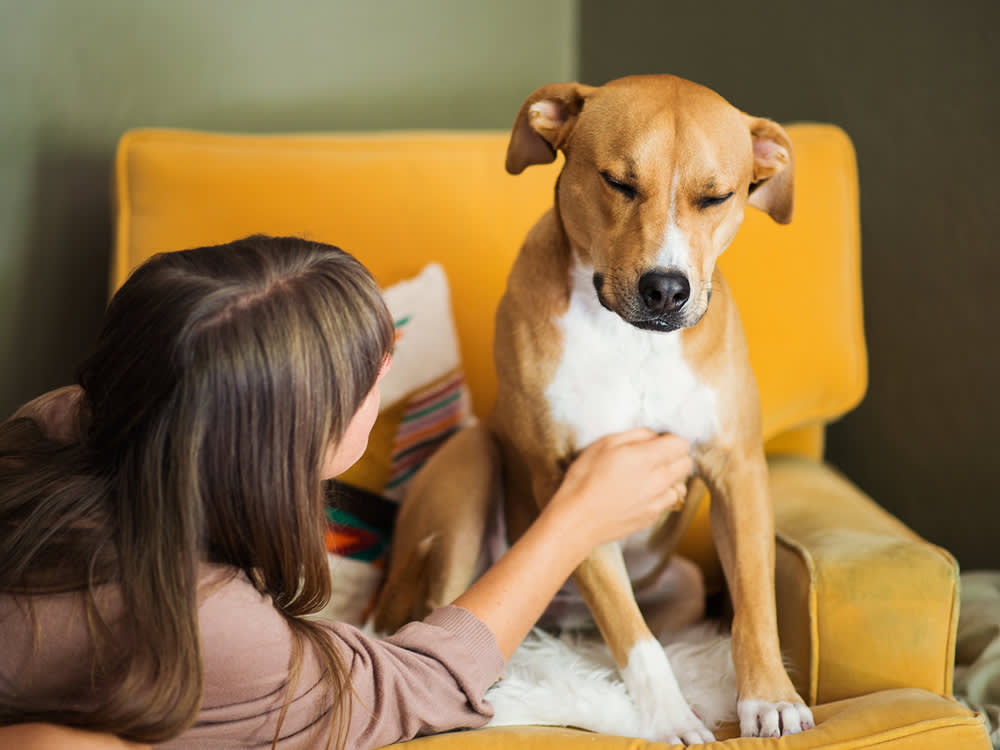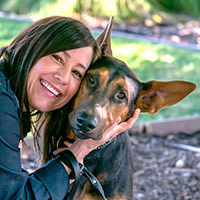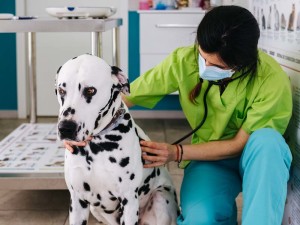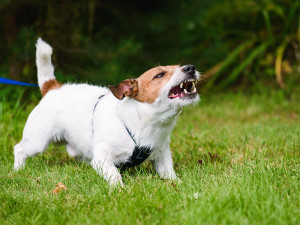DIY Physical Exam – How to Examine Your Dog’s Stomach and Skeleton
Veterinarian Dr Shea Cox on how to properly examine your dog’s stomach and musculoskeletal system

share article
Here’s how to conduct a basic health check at home on your dog’s stomach, as well as their musculoskeletal system.
How to check your dog’s stomach
The exam is pretty straightforward: touch and feel your dog’s stomach, starting just behind the ribs, and gently pressing your hands into the belly. Like all other parts of the body, you will be getting a feel for what is normal, and then continuing to monitor for any future changes.
If your pet has just eaten, you may be able to feel an enlargement in the left part of the belly just under the ribs (where the stomach is), which can be normal just after eating. Continue by proceeding towards the rear of the body, passing your hands gently over the entire area. A dog’s stomach should feel soft and not swollen. If your dog’s stomach is hard, that could be a sign of bloatopens in a new tab and requires immediate veterinary attention.
Normal
No lumps, bumps or masses.
No discomfort on palpation.
No distention of the belly.
Abnormal
Any lump, bumpopens in a new tab or mass you feel.
Any examination with your fingers and hands (palpation) that causes groaning or difficulty breathing.
Any evidence or indication of pain is a serious finding and requires immediate attention; sudden and marked belly pain is what we refer to as ‘an acute abdomen’, and can be caused by various conditions including pancreatitis (inflammation of the pancreas), sepsis (an infection in the belly that can be caused by a ruptured bowel or foreign body), bleeding into the belly (such as from rat bait or a ruptured spleen), trauma, tumours or abscesses.
If the abdomen feels hard or tense and it appears distended: this is one of the major signs of bloat or GDV and immediate attention is needed.
How to assess your dog’s musculoskeletal system
There are many conditions that can all look like ‘a basic lameness’ in dogs. Below are a few of the more common presentations and their potential causes.
Abnormal
Lameness in any single leg: when a pet becomes lame, sources of the discomfort can be from the bone, soft tissue, joints, or tendon/ligaments.
A persistent, non-resolving lameness despite rest and medications: this requires veterinary attention because it could be a result of a type of bone cancer called Osteosarcomaopens in a new tab; another typical presentation for bone cancer that I see is a pet that develops a very sudden and severely painful lameness following a ‘simple’ act, such as jumping off the sofa.
Loss of function or paralysis in hind legs: some causes include disease processes such as a herniated disk, cancer, infection, narrowing between the vertebrae of the spine, or degenerative myelopathy; losing the ability to walk is an emergency and immediate care is needed to help improve your pet’s chances of regaining mobility.
Recurring, shifting leg lameness, painopens in a new tab, and fever in a young dog: panosteitis is a disease of the long bones of mostly young, growing large breed dogs; German Shepherd males are most frequently affected.
Limp tail: this is also known as limber tailopens in a new tab or cold tail, and is a condition in which a working dog suddenly develops a flaccid tail; most dogs recover spontaneously within a few days to weeks, but evaluation by your vet should be done because there are other diseases that can mimic a limber tail, such as a tail fracture, spinal cord disease, impacted anal glands, and prostatic disease.
Performing these health checks in the comfort of your own home is the best way to recognise any early changes in your dog’s health. Consult your vet if an abnormal condition exists or you are concerned about any exam finding. Early recognition can save the life of your pet.
By no means is this list exhaustive, and this information is intended as a general reference; it is not intended to replace professional advice or an examination by a vet.

Dr. Shea Cox, DVM, CVPP, CHPV
Dr. Shea Cox is the founder of BluePearl Pet Hospice and is a global leader in animal hospice and palliative care. With a focus on technology, innovation and education, her efforts are changing the end-of-life landscape in veterinary medicine.
Related articles
![Dog on leash barking with hair standing up]() opens in a new tab
opens in a new tab‘Piloerection’ Is Not a Dirty Word
Weirdly, this is what it’s called when your dog raises their hackles. And here’s why they do it...
![Fluffy brown and white puppy dog scratching a lot with its paw]() opens in a new tab
opens in a new tabYour Itchy Dog Deserves Relief – Here’s What to Do
How you can help them feel better – fast
![Dalmatian and Great Dane mixed dog at the vet being checked on by a nurse in bright green scrubs]() opens in a new tab
opens in a new tabBeware of Bloat in Dogs
Consider it the mother of all dog emergencies – if your dog has it, take them to the vet ASAP. Learn how to spot the condition and how it’s treated
![feeding black dog rice water to help relieve diarrhea]() opens in a new tab
opens in a new tabHow to Treat Your Dog’s Diarrhoea
Shudder. It happens to all of us
![Bearded Collie running in a lake]() opens in a new tab
opens in a new tabWhen Drinking Too Much Water Is Deadly
How to keep your swimming dog safe




